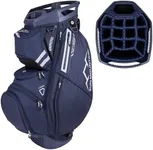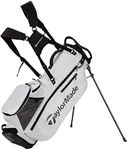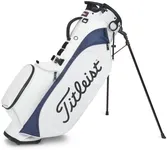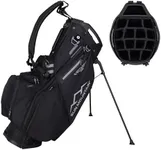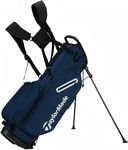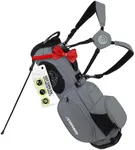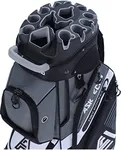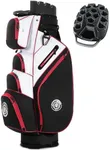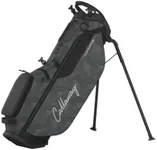Buying Guide for the Best Golf Bags
Choosing the right golf bag is a key part of making your golfing experience enjoyable and organized. A good golf bag should match your playing style, how much equipment you carry, and how you typically move around the course. Think about whether you walk or use a cart, how many clubs and accessories you like to bring, and how important comfort and durability are to you. Understanding the main features of golf bags can help you find one that fits your needs and makes golfing easier.Type of BagGolf bags come in several types such as stand bags, cart bags, carry bags, and travel bags. The type of bag is important because it determines how you'll transport your clubs and gear. Stand bags are lightweight and have built-in legs for easy standing on the course, making them ideal if you walk the course often. Cart bags are designed to fit on golf carts and offer more storage and organization, which is great if you typically ride. Carry bags are ultra-light and simple, best for those who play quick rounds or want minimal weight. Travel bags add protection for transporting clubs long distances, perfect if you travel for golf. Pick a type that fits how you most often play.
WeightThe weight of the golf bag affects how easy it is to carry, especially if you're walking the course. Bags typically range from light (around 2-4 pounds), to medium (5-7 pounds), to heavy (8 pounds or more). If you walk frequently or have a smaller frame, a lighter bag reduces fatigue. If you use a cart and need more space, a heavier bag with more features might work better. Think about your physical comfort and typical usage when considering bag weight.
Storage and PocketsStorage in a golf bag includes the number and type of pockets and compartments for accessories, balls, clothing, drinks, and valuables. Bags vary greatly, with some offering just a few pockets for essentials and others packed with specialized compartments—including insulated cooler pockets and waterproof valuables pouches. If you like to carry a lot of extra gear or change layers during your round, look for more storage. If you play light, fewer pockets keep things simple.
Club DividersClub dividers help organize your clubs and prevent them from clanging together. Bags can have anywhere from a simple 2-way divider up to a 14-way system where each club has its own slot. More dividers mean better organization and protection, especially if you want to keep clubs separated. However, too many dividers can add weight or make the bag bulkier. Think about how organized you want your set to be and whether you find it easier to access clubs quickly.
Strap SystemThe strap system determines how comfortably and securely the bag sits on your shoulders or back. Single straps are simple, while double or backpack-style straps distribute weight more evenly and reduce strain, especially on longer walks. If you carry your bag a lot, look for adjustable, padded straps. If your bag will usually ride on a cart, strap style is less critical, but still helpful for getting your bag from your car to the course.
Durability and MaterialsDurability comes from the materials and construction quality of the bag. Common materials include nylon, polyester, and leather. A durable bag withstands weather, rough handling, and frequent use. If you play often or in wet conditions, more robust and water-resistant materials are a good choice. Occasional or fair weather golfers may prefer lighter, less rugged bags. Simply consider how much wear and tear the bag will endure.
Rain ProtectionRain protection involves features like water-resistant fabrics and included rain hoods. These keep your equipment dry in wet weather. If you play in variable climates or don’t mind golfing in the rain, prioritize bags with better rain protection. For those who play mostly in dry conditions, this may be less of a concern, but a basic rain hood is often still a good backup.

